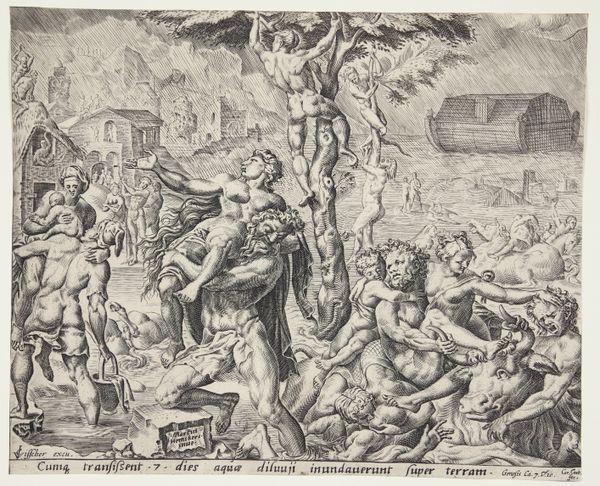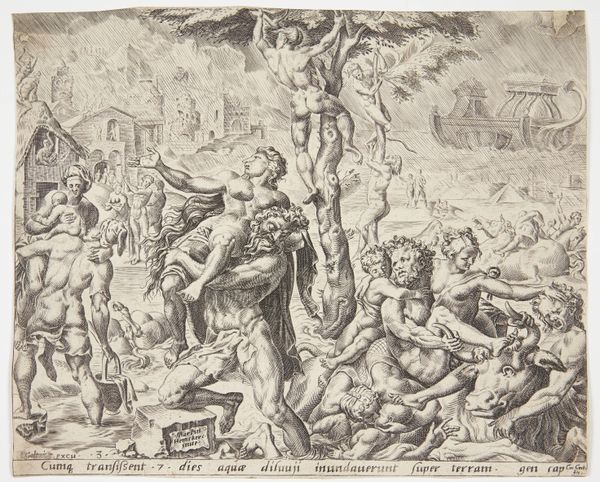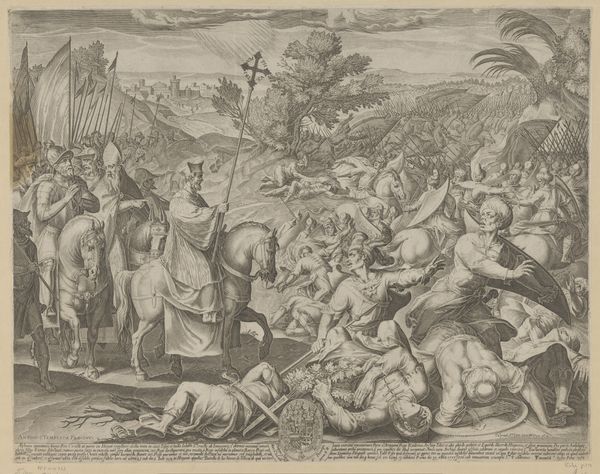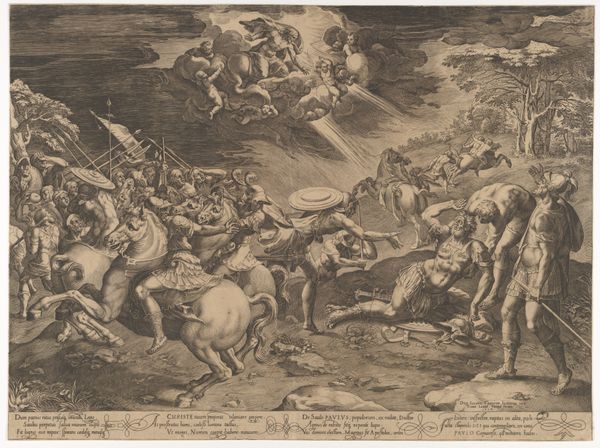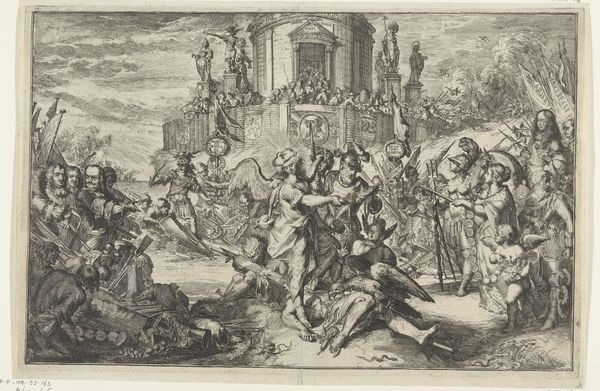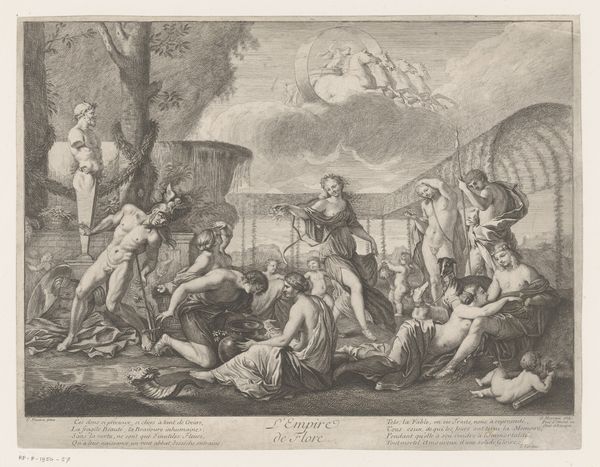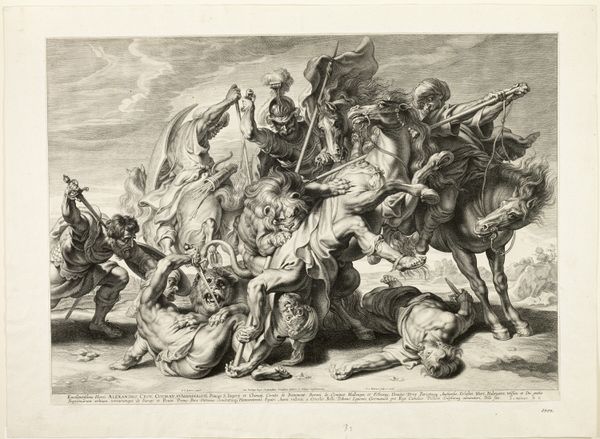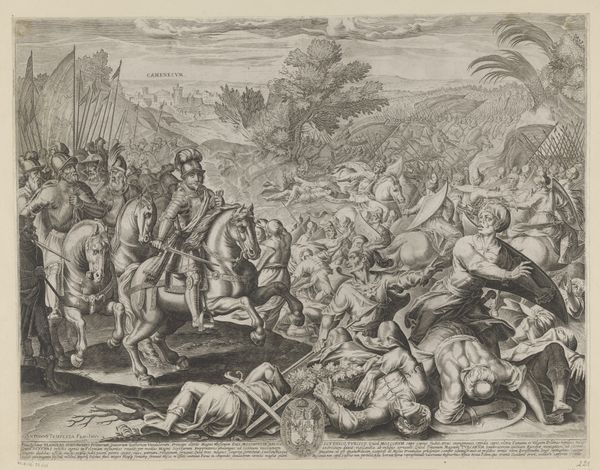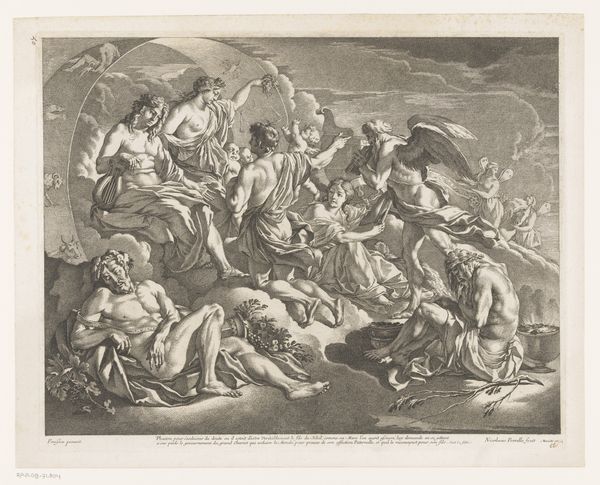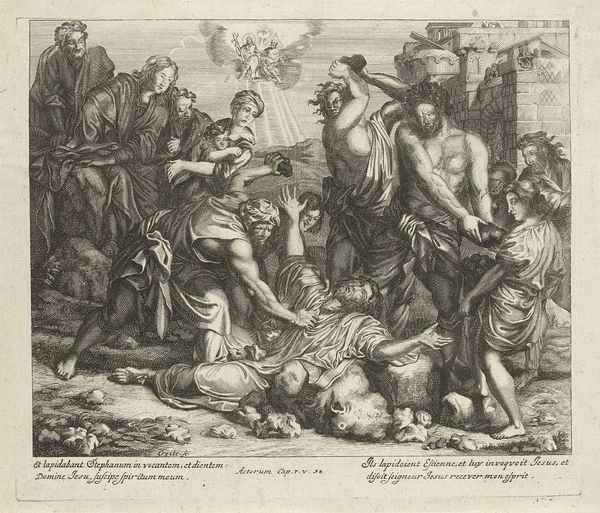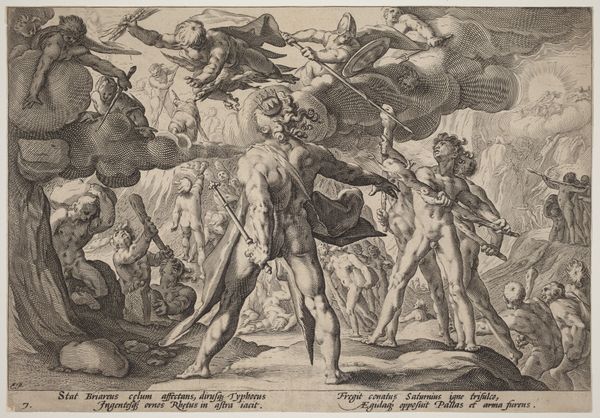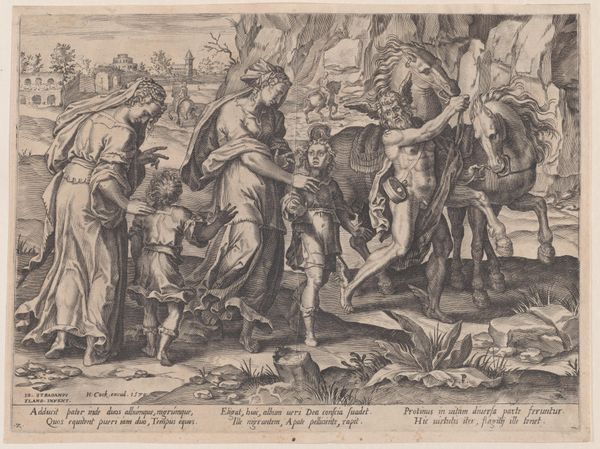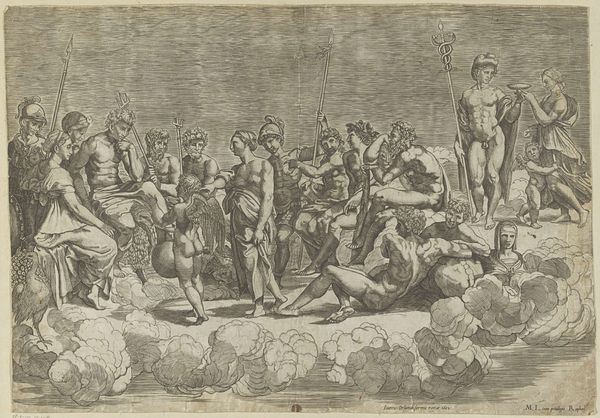
Pompa Introitus Honori .. Ferdinandi Austriaci ... " (Entry of Cardinal-Infante Ferdinand into Antwerp, April 17, 1635) 1642
0:00
0:00
drawing, print, engraving
#
drawing
#
allegory
#
baroque
# print
#
landscape
#
soldier
#
horse
#
men
#
history-painting
#
engraving
Dimensions: 22 3/16 x 17 5/16 x 11/16 in. (56.3 x 44 x 1.7 cm)
Copyright: Public Domain
Curator: This print from 1642 depicts "Pompa Introitus Honori Ferdinandi Austriaci," or "The Entry of Cardinal-Infante Ferdinand into Antwerp," by Peter Paul Rubens. What stands out to you most at first glance? Editor: The stark contrasts catch my eye – the intense black lines defining figures against areas of relative emptiness. It gives the scene a raw, immediate feel, almost like reportage even though it's obviously staged. I'm wondering about the materials and how this was made. Curator: As an engraving, its production would have involved a complex process, likely relying on several workshops and artisans specializing in different stages. Consider the division of labor implied by "PP. Rubens Inuent," "Thulden Delen" and "Grauertus Sculp", suggesting distinct roles for the initial concept, drawing and the engraving itself. The socio-economic context really shaped its creation. Editor: Absolutely. What really strikes me is the iconography packed into this image. We've got everything here, from classical figures to soldiers, all coexisting in this somewhat chaotic scene. Look at the central figures shaking hands – that's a symbolic act, isn’t it? Curator: Indeed. It is deeply allegorical, representing Ferdinand's entry into Antwerp. The river god, for instance, symbolizes the city itself, while the handshake likely signifies the union and peace brought by Ferdinand's arrival. Notice how the eagle overhead carries wreaths, symbolizing triumph and glory being bestowed. It blends mythology and contemporary political events seamlessly. Editor: But I also see a deliberate crafting of power and authority. The rendering in print underscores mass distribution. It reminds us that the political power wasn't only about governance, but the very image management that accompanied it. And consider the impact it had. Prints like these shaped public perception. Curator: Precisely. It served as visual propaganda. Rubens, being a diplomat himself, understood the power of images. But this particular work has elements that feel almost jarring. Editor: Jarring how? Curator: The figures are all idealized, Romanized really, yet they inhabit a distinctly Northern European landscape. I find this mix interesting from an art historical standpoint. The symbols can feel heavy-handed if you aren't accustomed to the visual language of baroque art. Editor: And the technique contributes to that too – those intense lines almost box in the meaning. This piece certainly captures a pivotal moment in history while being a prime example of how images themselves are tools for historical manipulation. Curator: Looking closer at this print encourages contemplation about the weight symbols carry. I appreciate being reminded to trace those roots, to consider how the past informs the present in ways both overt and deeply coded.
Comments
No comments
Be the first to comment and join the conversation on the ultimate creative platform.
